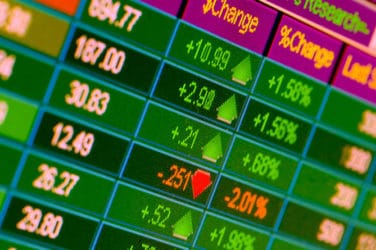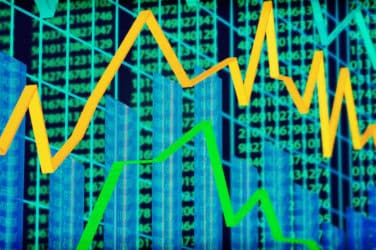
Law firm Ashurst said new trading regulations in Europe will place onerous data requirements on dealing desks and will define more firms as systemic internalisers.
The European Securities and Markets Authorithy has published a discussion paper and a consultation paper on the revised Markets in Financial Instruments Directive. The two documents are about 800 pages in total but Ashurst managed to summarise them in a six-page briefing note.
The note said: “Controversially, Esma has decided to go beyond its brief and make firms who act as market makers (a non-technical definition that will catch many dealing desks) comply with the data requirements that apply to the regulated markets.”
The law firm said regulated markets can easily provide this data but many dealing desks cannot and the regulator will be under pressure to change this approach.
In addition many more firms are likely to be caught by new thresholds for systematic internalisers.
“These calculations must be undertaken on a quarterly basis and firms will then have one month after triggering a requirement to comply with the SI pre-trade transparency regime,” Ashurst added.
MiFID II will also require high-frequency traders to become authorised and comply with compulsory market-making rules. The regulator has proposed to define HFT as either any firm that sends more than 75,000 daily trading messages or anyone whose average order lifetime is less than the the average lifetime of orders on a particular market.
Ashhurst said: “One helpful piece of Esma advice is that the compulsory market-making requirement will, however, only apply where it is the investment firm, not its client, which is undertaking the HFT business. As a result, few investment firms will be hit by this requirement, but some of their clients may be.”
Under MiFID II when firms choose to execute transactions outside a regulated market, they will have to explain the risk of not using a central counterparty. For over-the-counter transactions firms will have to check the fairness of the price on behalf of their client and if they act for both sides they will be required to disclose the fees received from one party to the other.
The International Swaps and Derivatives Association said in a statement that Esma’s definition of a liquid financial instrument is crucial. Liquid instruments will be subject to strict pre- and post-trade transparency requirements, as well as potentially having to trade on some from of regulated market.
“Under Esma’s proposals for post-trade transparency, for instance, information on price, volume and time of trade would have to be made public within five minutes of a transaction in a liquid instrument taking place (although deferrals exist for trades that meet yet-to-be-decided size-specific and large-in-scale thresholds),” added Isda. “If an instrument is deemed to be illiquid, however, publication of the most sensitive information is deferred until the end of the following day.”
Isda said it is likely that most standardised over-the-counter derivatives market may be defined as liquid instruments.
“The challenge for Esma will be in balancing a desire to apply the new transparency rules to a large enough portion of trading volume in each market with thresholds that reflect real liquidity, based on an objective analysis of the data,” Isda added.
Ashurst said Esma has also given detailed new guidance on the significant changes around the ability of firms to provide research to investor clients. Sellside firms usually provide free research but this will only allow it to continue if there really is no cost, the research is widely distributed and there is no access to analysts.
The law firm said: “If these tests cannot be passed, the implication is that the costs must be “unbundled” – in other words, research can be sold for a specific price, but not distributed for free. It runs contrary to the recently announced approach of the FCA in the UK in development the regulation.
The replies to the Esma papers are due by August 1. The European regulator has until May 2015 to complete its consultation, and the European Commission has requested that Esma provide advice on all of the delegated acts by December 2015. The laws under the directive are expected to come into effect on 3 January 2017.
Last month a survey of more than 200 buyside and sell side market participants at the MarketAxess European Capital Markets Forum in London found that 79% did not believe that detailed MiFID II rules would be completed in the next 12 months.
A majority of respondents, 58%, believed there is not enough transparency in European corporate fixed income but many were undecided as to whether MiFID II requirements will improve or harm liquidity.
The biggest concern in the next 12 months for 63% of respondents was the increasing volume of regulation.
A survey of more than 200 financial figures, regulators and officials by the International Organization of Securities Commissions also found that regulatory uncertainty is a chief concern for the industry.
“Predominantly regulators see risk emanating from illegal conduct, poor corporate governance, financial risk disclosure and benchmarking issues, while only a small fraction of financial market participants recognise these topics as potential risk areas,” Iosco added. “Market participants are more concerned with risk in the areas of search for yield, resolution and resolvability plans, CCPs and market fragmentation.”
Respondents in the Iosco survey said central counterparties have reduced systemic risk and improved market liquidity but were worried about the concentration of large risks into CCPs that are too big to fail.
Iosco said: “Effective risk management by CCPs is essential. However this could be potentially undermined by competition among CCPs, which drives the search for cost savings in their business models.”
The Iosco survey also warned that CCPs may also create incentives to clear products that, in the search for new business, should not be cleared.





